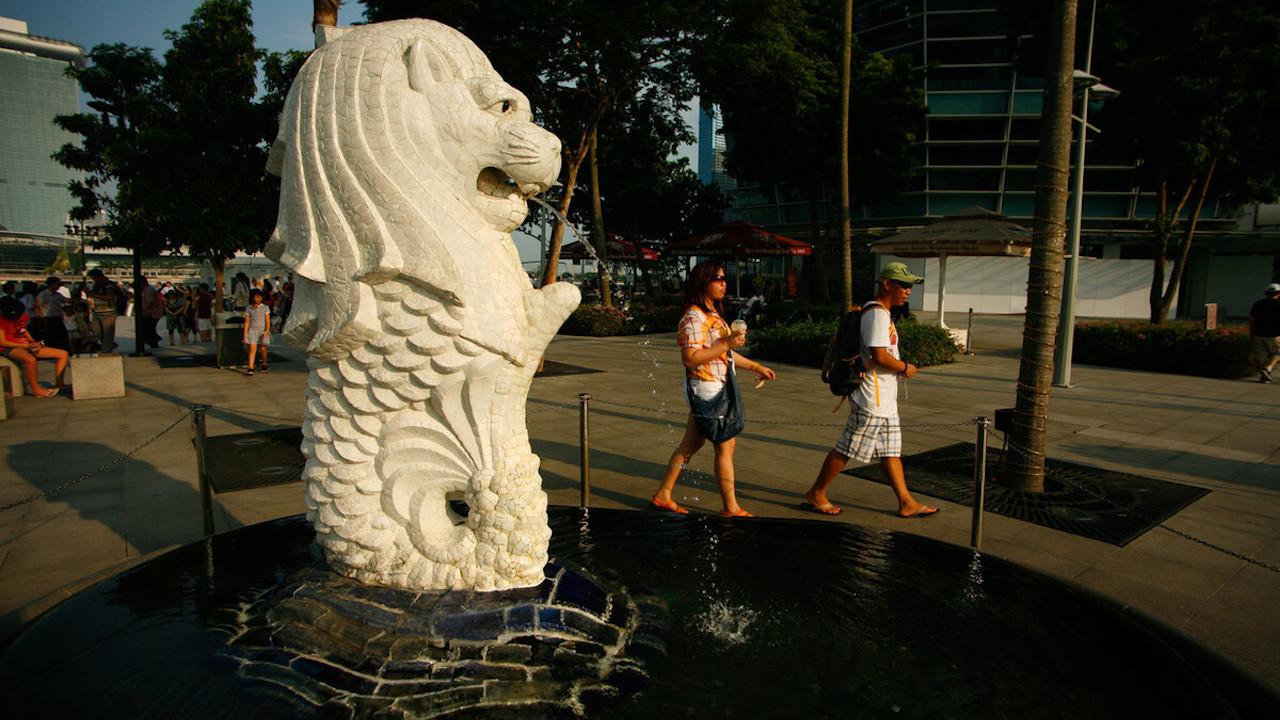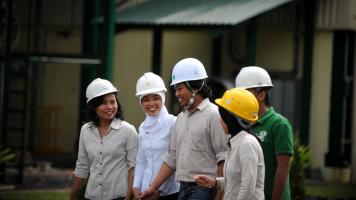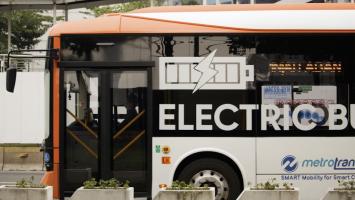Singapore’s Built Environment Traps Heat in Surprising Places

Planning Business Leader, Southeast Asia, Arup

Singapore is warming at twice the global average rate, warranting urgent action to devise innovative cooling strategies. Photo credit: ADB.
When it comes to designing for heat, sustainable solutions, such as incorporating the natural environment into the design, should be paramount.
This article is published in collaboration with Arup.
A new study by Arup, a global sustainable development consultancy, has revealed Singapore’s heat island “hot spots,” highlighting the areas of the city’s urban center where temperatures are highest compared to their rural surroundings. These are also known as urban heat island (UHI) hot spots.
Arup’s Urban Heat Snapshot has identified a large cluster within the Singapore Central Business District (CBD)—including not only high-rise areas but also historical low-rise streets—as the most extreme “hot spots” in Singapore, experiencing temperatures 6°C higher than their rural surroundings. Using artificial intelligence and satellite images, the research compared Singapore to the urban centers of six other cities— Cairo, London, Los Angeles, Madrid, Mumbai, and New York—on the hottest day they experienced last year.
The study mapped the whole of Singapore, with a particular focus on a 150-square kilometer (km2) snapshot of the city state's urban center, using Arup’s digital heat analytics tool UHeat. As temperatures hit record highs around the world, compounding the UHI effect in cities, the tool has the ability to take a rapid snapshot of an area and model solutions to reduce the impact of its hot spots. The tool brings together advanced academic models, real-world scenarios, and technology.
In the majority of cities, the hottest spots had less than 6% vegetation cover, while the coolest spots in most cities had over 70% and were found almost entirely in parks, away from residential and commercial areas.
Singapore's hottest and coolest locations
While the cluster of hot spots included obvious locations with hard, impermeable surfaces or tall, closely packed buildings like Raffles Place, Shenton Way, and Lau Pa Sat, other surprising locations included historical low-rise streets like Telok Ayer and Amoy Street. Despite these streets having low-rise development, green spaces, and close proximity to Marina Bay, crucial elements are intensifying heat. The once coastal roads are now surrounded by high-rise urban developments that block the cooling effect from the nearby coast. The adjoining shophouses on the streets also have dark terracotta roofs that reach very high temperatures due to solar radiation. This heat is transferred to the air around the buildings, which is more impactful for low-rise areas close to pedestrian height.
Other neighborhoods experiencing a temperature difference of above 5°C compared to their rural surroundings, included industrial zones like Kampong Ubi, areas with high population density in Rochor and Marine Parade, and areas within Orchard as well as Sembawang.
The coolest spot identified within Singapore’s 150-km2 snapshot was Upper Peirce Reservoir Park with 88% water and 12% vegetation absorbing heat and making the area significantly cooler (6.5°C cooler) than Singapore’s most severe UHI hot spot.
The need for more sustainable cooling strategies
Designers and decision makers should not be complacent about the urban heat island effect. Despite a high population, we have a lot of greenery through the city that mitigates the effects of urban heat islands. However, there is still more to do when it comes to designing for heat. We all have a tendency to retreat to air-conditioned environments when temperatures rise—from a sustainability perspective, this is far from ideal given the reliance on energy and the inequality of this approach as not all citizens have the luxury of working indoors. It is important we consider more sustainable strategies for mitigating heat, such as incorporating the natural environment into our design.
Survey contributor, Ting Sun, University College London, Institute for Risk and Disaster Reduction, said: “Singapore is warming at twice the global average rate, according to the Meteorological Service Singapore, which warrants urgent action to devise innovative cooling strategies. Digital solutions like UHeat can help a city like Singapore think about how to implement its advanced cooling strategies on a case-by-case basis, by bridging the gap between advanced modelling and the practical tools urban designers need.”
Arup’s report recommends essential urban design solutions to cool cities including increasing tree canopy cover, creating more permeable surfaces, and using every space possible like white or reflective roofs to passively cool the buildings themselves and reduce the need for air conditioning.
These are all design strategies Arup has proposed in a master plan called “The Intersection” that reimagines Yishun Industrial Park as a future-ready industrial estate within nature. The design embeds a range of water, landscape, and blue-green infrastructure strategies across the site including extensive urban greening, shade, and natural ventilation to provide a host of social, economic, nature focused, and environmental benefits.
This article was first published by Arup on 14 December 2023.

Tony Chan
Planning Business Leader, Southeast Asia, ArupWith a background in urban planning and sustainability, Tony Chan has led various large-scale projects in Australia, the People's Republic of China, and Southeast Asia, including the Eastern Economic Corridor Strategy in Thailand, Indonesia’s new capital city, and the Urban Climate Change Resilience Trust Fund Study for the Asian Development Bank.

Arup
Arup is a global collective of designers, consultants, and experts dedicated to sustainable development and to using imagination, technology, and rigor to shape a better world.


